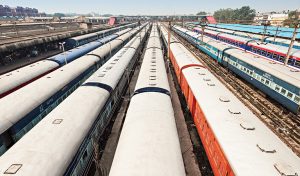Red, Green And Orange Zones – What’s It All About?
By Dixit Arora +2 more

Download PharmEasy App




Register to Avail the Offer
Send OTPBy continuing, you agree with our Privacy Policy and Terms and Conditions
By Dixit Arora +2 more
We are already into the 7th week of the lockdown that began on March 24th. During the last few weeks, countries like the USA saw a surge in COVID-19 cases. However, India’s fate has turned out to be different.

Since India was one of the first countries to implement lockdown measures, our COVID-19 numbers are under control. Experts have concluded India would have had millions of cases by May if lockdown wasn’t implemented.
Table of Contents
Although the lockdown has led to fewer cases, the fight isn’t over yet. At this moment, India has 33,509 active cases. The cases could go up exponentially if lockdown norms were to be relaxed.
But at the same time, one needs to take into account India’s economy. The lockdown has had a crippling effect on the economy, as India’s GDP growth is expected to fall to 1.5-2.8% for FY 2020-21.
To tackle the issue of restarting the economy gradually while keeping COVID-19 cases low, the Indian government has decided to adopt a dynamic approach to lockdown.
The government has divided the entire country into three zones – red, orange and green.

What does this mean? Depending on the number of COVID-19 cases a region has, it will be classified as either red, green or orange.
If a particular district has over 15 cases, then it will be considered a hotspot, and be classified as a red zone.
For districts whose COVID-19 cases are below 15 and don’t seem to be increasing at present, they will be labelled orange zones.
Green zones will be the districts with zero COVID-19 cases.
Note that air and train travel are not allowed across the country as of now.
What’s allowed
What’s not allowed
What’s allowed
In addition to all the activities permitted in red zones, the following is allowed –
What’s not allowed
What’s allowed
All activities are allowed in green zones with few restrictions. Buses can operate with 50% capacity.
What’s not allowed
Certain activities are prohibited nationwide like the opening of malls, train and air travel, interstate road movement and opening of educational institutions.

Delhi – The entire national capital region is a red zone at present.
Mumbai – Mumbai is the epicentre of the COVID-19 outbreak in Maharashtra. It has been labelled as a red zone.
Chennai – With 300 cases and counting, Chennai has been designated as a red zone.
Kolkata – Most cases in West Bengal have been registered in Kolkata. The city is a COVID-19 hotspot and has been tagged as a red zone.
Comply with the government guidelines to avoid COVID-19. Moreover, follow social distancing and other personal hygiene practices to ensure you remain safe.
Update:
Note that the fight against COVID-19 is going to be a long one. It’s time all of us unite to tackle COVID-19 and keep ourselves and our loved ones safe.
Disclaimer: The information provided here is for educational/awareness purposes only and is not intended to be a substitute for medical treatment by a healthcare professional and should not be relied upon to diagnose or treat any medical condition. The reader should consult a registered medical practitioner to determine the appropriateness of the information and before consuming any medication. PharmEasy does not provide any guarantee or warranty (express or implied) regarding the accuracy, adequacy, completeness, legality, reliability or usefulness of the information; and disclaims any liability arising thereof.
Links and product recommendations in the information provided here are advertisements of third-party products available on the website. PharmEasy does not make any representation on the accuracy or suitability of such products/services. Advertisements do not influence the editorial decisions or content. The information in this blog is subject to change without notice. The authors and administrators reserve the right to modify, add, or remove content without notification. It is your responsibility to review this disclaimer regularly for any changes.
Comments